Abstract
To determine whether aerosolization could impair bacterial survival, Pseudomonas syringae and Erwinia herbicola were aerosolized in a greenhouse, the aerosol was sampled at various distances from the site of release by using all-glass impingers, and bacterial survival was followed in the impingers for 6 h. Bacterial survival subsequent to aerosolization of P. syringae and E. herbicola was not impaired 1 m from the site of release. P. syringae aerosolized at 3 to 15 m from the site of release at a temperature of 12 degrees C and a relative humidity of 80% survived 35- to 65-fold better than P. syringae released at 27 degrees C and a relative humidity of 40%. No difference was observed in the survival of P. syringae and E. herbicola following aerosolization at the same temperature and relative humidity. Bacteria sprayed directly onto bean and oat plants established stable populations at comparable numbers on both plants over an 8-day period following inoculation. Bacteria that inoculated adjacent plants by drifting downwind up to 5 m were detectable at an initial population of 10(2) CFU/g on oats and 10(5) CFU/g on beans 2 h after the spray. However, bacterial populations on both plants were undetectable within 48 h.
Full text
PDF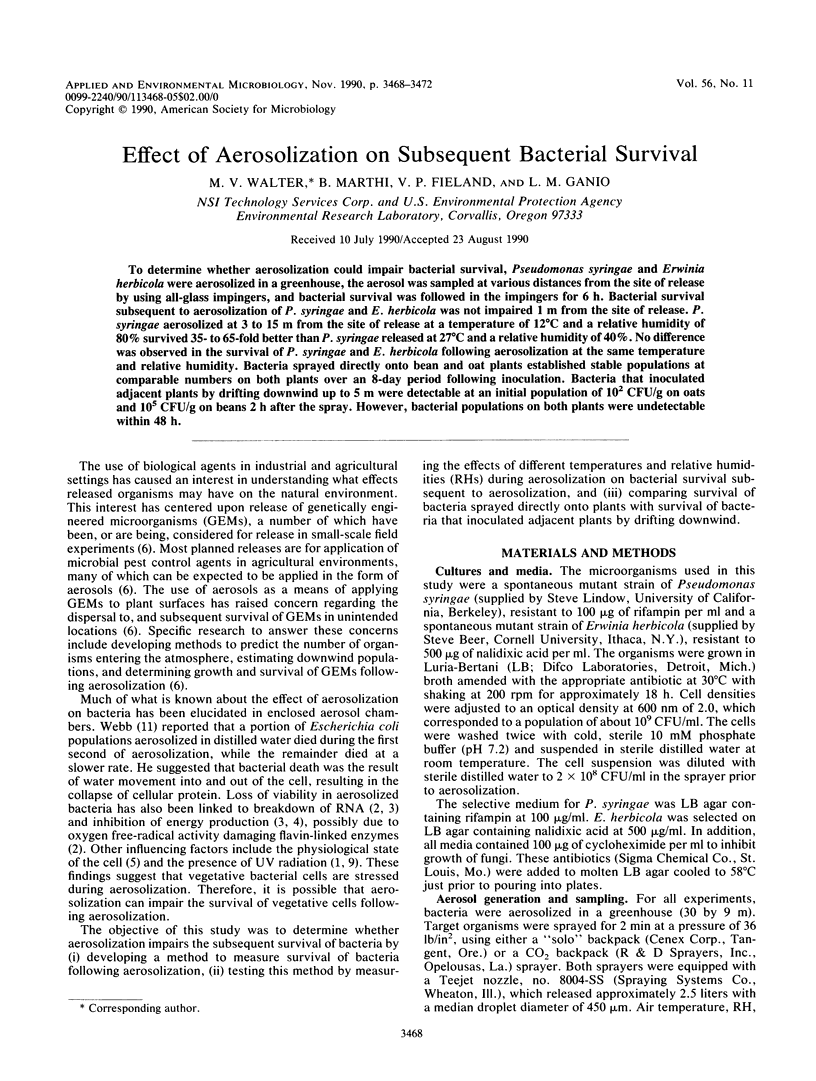
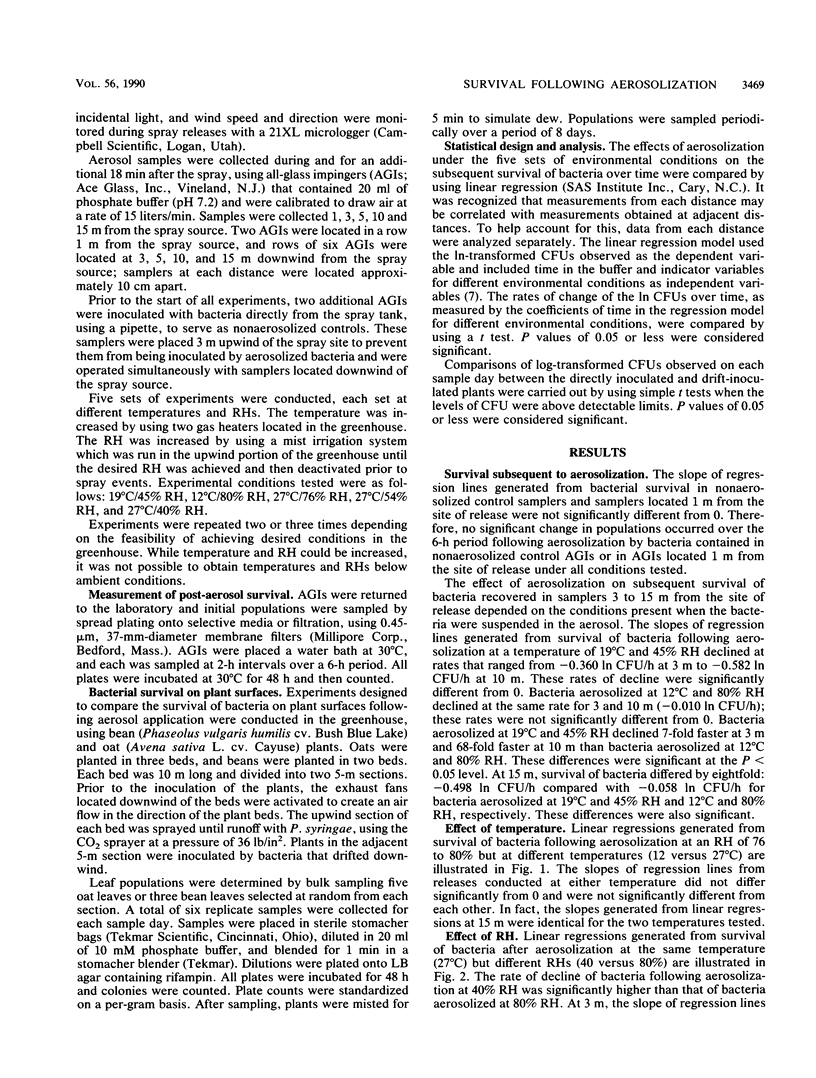
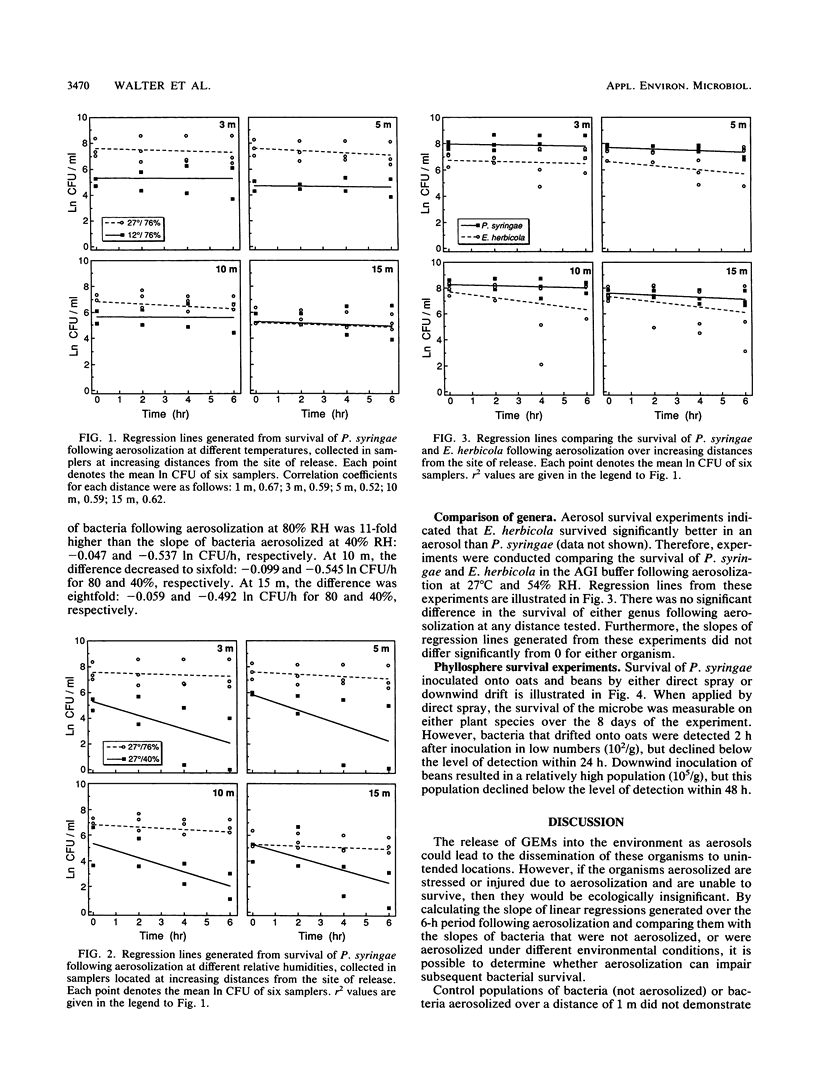
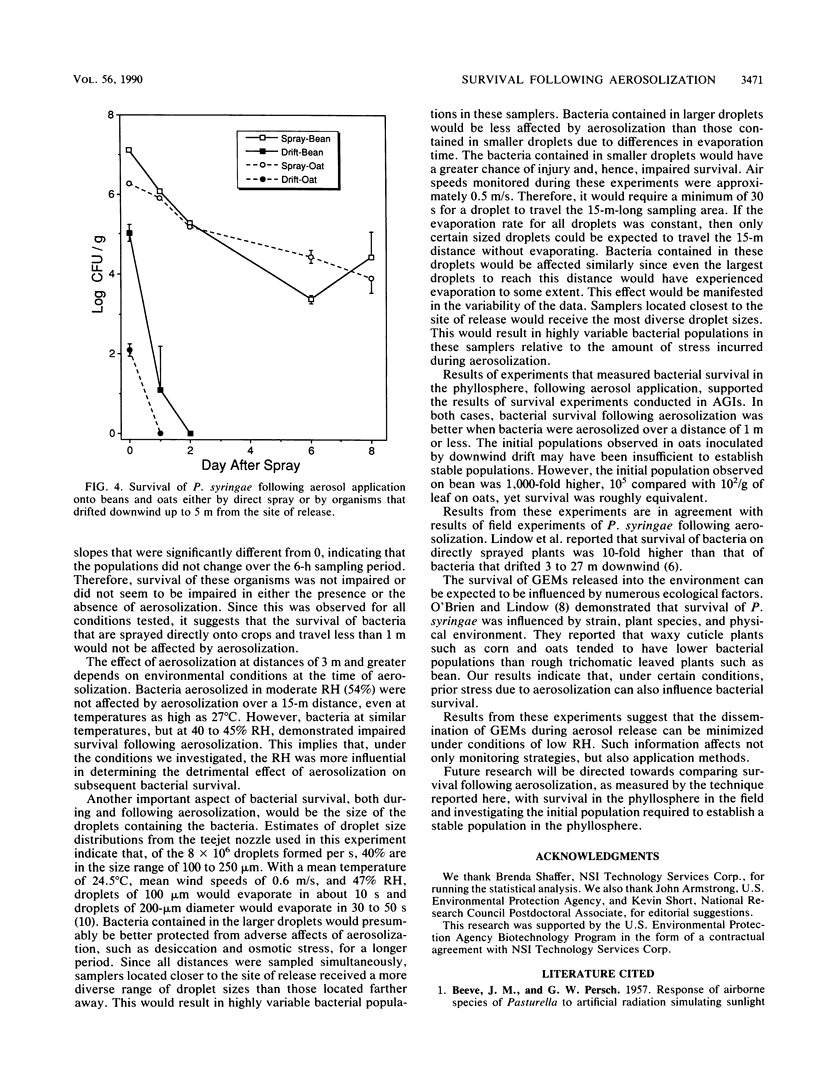
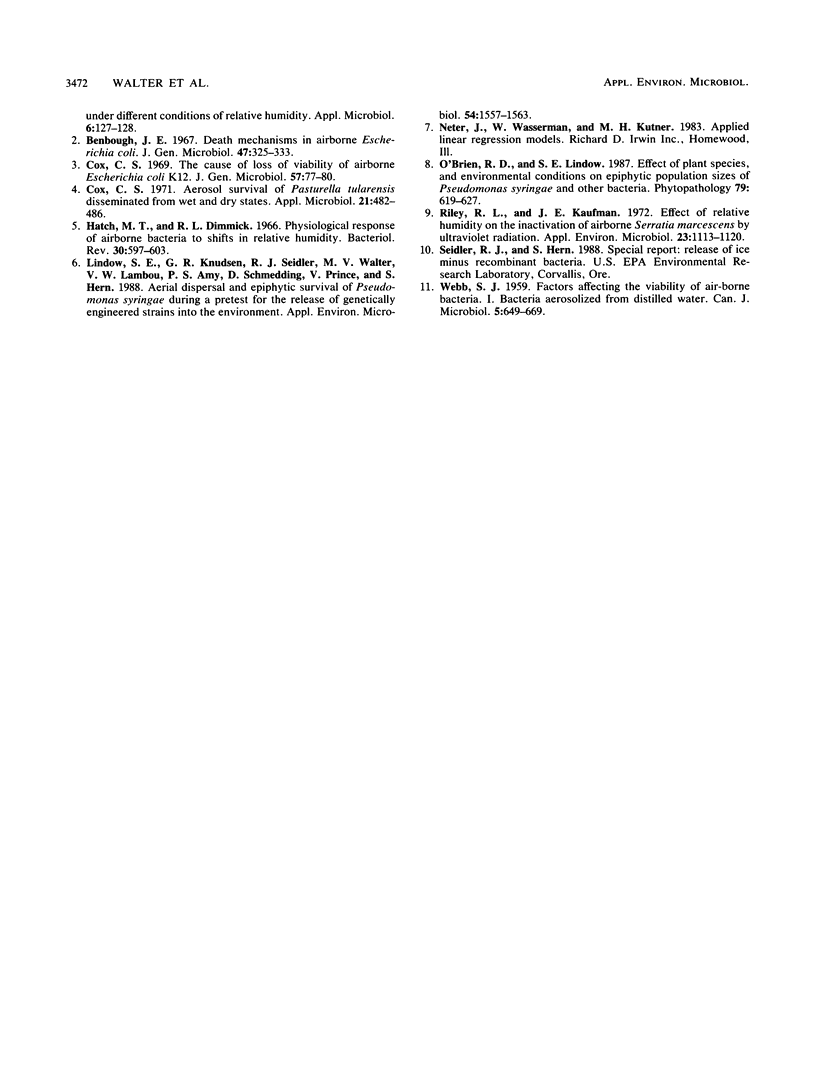
Selected References
These references are in PubMed. This may not be the complete list of references from this article.
- Benbough J. E. Death mechanisms in airborne Escherichia coli. J Gen Microbiol. 1967 Jun;47(3):325–333. doi: 10.1099/00221287-47-3-325. [DOI] [PubMed] [Google Scholar]
- Cox C. S. Aerosol survival of Pasteurella tularensis disseminated from the wet and dry states. Appl Microbiol. 1971 Mar;21(3):482–486. doi: 10.1128/am.21.3.482-486.1971. [DOI] [PMC free article] [PubMed] [Google Scholar]
- Cox C. S. The cause of loss of viability of airborne Escherichia coli K12. J Gen Microbiol. 1969 Jul;57(1):77–80. doi: 10.1099/00221287-57-1-77. [DOI] [PubMed] [Google Scholar]
- Hatch M. T., Dimmick R. L. Physiological responses of airborne bacteria to shifts in relative humidity. Bacteriol Rev. 1966 Sep;30(3):597–603. doi: 10.1128/br.30.3.597-603.1966. [DOI] [PMC free article] [PubMed] [Google Scholar]
- Lindow S. E., Knudsen G. R., Seidler R. J., Walter M. V., Lambou V. W., Amy P. S., Schmedding D., Prince V., Hern S. Aerial Dispersal and Epiphytic Survival of Pseudomonas syringae during a Pretest for the Release of Genetically Engineered Strains into the Environment. Appl Environ Microbiol. 1988 Jun;54(6):1557–1563. doi: 10.1128/aem.54.6.1557-1563.1988. [DOI] [PMC free article] [PubMed] [Google Scholar]
- Riley R. L., Kaufman J. E. Effect of relative humidity on the inactivation of airborne Serratia marcescens by ultraviolet radiation. Appl Microbiol. 1972 Jun;23(6):1113–1120. doi: 10.1128/am.23.6.1113-1120.1972. [DOI] [PMC free article] [PubMed] [Google Scholar]


